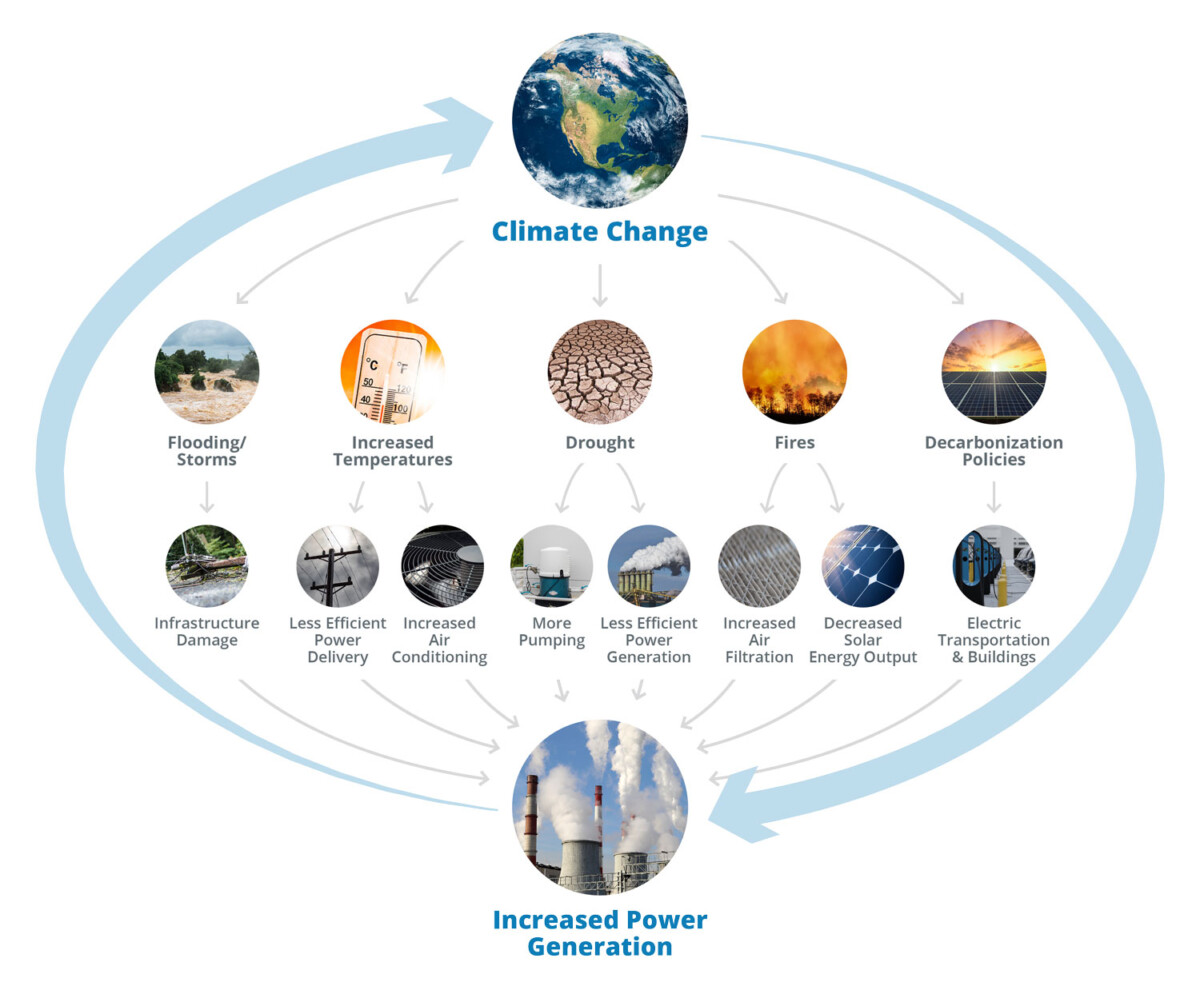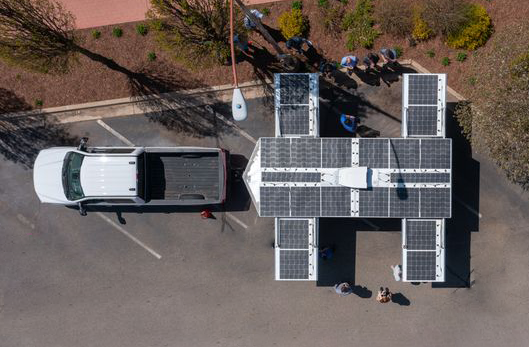Overview
The County of Santa Barbara 2030 Climate Action Plan sets targets for electrifying buildings and vehicles and powering them with carbon-free renewable electricity.
More than half (52%) of the electricity that flows to Santa Barbara County homes and organizations is renewable and/or carbon-free.
However, increasing renewable energy and decarbonization goals are challenging our grid, which is a relic of a past way of powering our lives using a centralized power plant model, overhead lines, and outdated pricing models. Climate change-related disasters and weather events are further challenging the reliability of the energy system. It will require all of us to bolster our energy system against future changes.
Climate Change Risks to Our Energy System
Santa Barbara County’s geography, topography, changing climate, and sustained population growth present risks to our energy system. While the natural features of Santa Barbara County have long made it susceptible to wildfires, human influences that contribute to climate change, such as burning fossil fuels, removing natural carbon sinks like forests and healthy soils, and stifling naturally occurring wildfires, are making wildfires more intense, more widespread, and more frequent. These fires, related debris flows, and flooding directly threaten our electricity and natural gas infrastructure. Natural gas facilities are also susceptible to explosions in response to climate change-driven events and others (e.g., earthquakes). The gas system can also take longer to return to service following an outage. A 2014 City and County of San Francisco report found that natural gas systems can take 30 times longer than electric systems to restore, resulting in outages for months rather than days.
Climate change also causes feedback loops that make it harder to slow the pace of climate change and adapt to its effects. One of these feedback loops is how climate change induces greater demand for electricity, which can strain our existing electricity supplies and the grid that delivers electricity to customers while also increasing emissions that cause climate change. The illustration below shows how climate change and policies that seek to limit the causes of climate change are driving increased electricity consumption, which exacerbates climate change.

Power Outages and Their Impact

Santa Barbara County is at the end of PG&E’s and SCE’s power lines. The two utilities’ distribution grids do not connect in Santa Barbara County. This grid independence can protect against a failure of one system negatively impacting the other, but it also can limit backup power options across service areas in the county. Electricity flows to customers in Santa Barbara County mainly through power lines that traverse mountainous terrain at high risk for wildfire and/or flooding disruption, especially along the South Coast.
The County of Santa Barbara Office of Emergency Management classifies energy disruptions—such as power outages—as a form of “lifeline system failure.” That is, residents and businesses depend on electrical services for health, safety, and economic livelihood. Extended power outages can be not just inconvenient but deadly.
County residents and businesses have experienced the lasting effects of environmental hazards causing short- and long-term energy outages, such as occurred during the 2017 Thomas Fire and 2018 Montecito Debris Flow. While cyclical fires and floods are endemic to Santa Barbara County, the frequency and scale of the disasters—and their potential to cause sustained utility outages—are increasing, as shown in this Santa Barbara Disaster Timeline compiled by the Santa Barbara Bucket Brigade.
The pace of events has accelerated from decades to years, and now, months or weeks between emergency events. While they can help prevent wildfire-driven power outages, public safety power shutoffs (PSPS) are costly to utilities and communities. For example, PG&E reported $10 billion in lost electricity sales in 2019, and one hour of downtime from outages is estimated to cost manufacturers more than $5 million. (Clean Energy Buyers Institute, 2023) While relatively uncommon, PSPS outages historically have averaged up to 36 hours in parts of the county. (PSE Healthy Energy, n.d.)
A crucial way to mitigate the risk of power outages—whether planned or not—is to generate and store more clean energy locally to reduce dependencies on the electrical transmission system while supporting our climate goals. The Energy Assurance Map shows how we increase the supply of carbon-free, renewable energy and energy storage projects.
